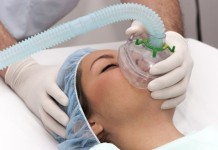WASHINGTON, DC – The ACGME made a ground-breaking decision last week to stop their decades long practice of medical boards testing. Instead, all 4th-year medical students and 2nd-year residents will gather for a skills combine to demonstrate their ability (or lack thereof) to function in a simulated American medical environment. The ACGME’s Education Chairman, Alan Mitchell, MD, Ph.D, JD, MPH, MS, was reached for comment regarding the changes.

“We felt that the old process toward licensure was outdated. Medical knowledge and critical thinking are so much less important now than they were 50 years ago. Now, we have protocols for every possible medical problem, from DKA to appendicitis to heart failure. The modern physician now needs to be deft at ramming a round peg into a square hole as far as diagnosis goes, clicking the right boxes, and maintaining high patient satisfaction scores. We thought that the process toward licensure should reflect the way a modern doctor actually works.”
Mitchell went on to explain some of the skill stations at the combine, which will take place in Indianapolis twice per year with all residency directors and many prospective employers present.
“Mouse Clicks Per Minute, or MCPM, is analagous to the 40-yard dash in the NFL combine. No other skill predicts speed in clinic, the ER, OR, or hospital than MCPM. Recent studies have shown that an average American emergency physician clicks a mouse about 5,000 times in an 8-hour shift. If a student or resident can’t click on target at a rate of 80 MCPM with 90% or greater accuracy, they have no hope to be even reasonably productive.”
“Office Supply Troubleshooting, or OST, shows who the true problem solvers are. With a downtime or failure rate of 20-25%, current medical computer tracking systems will challenge the patience of every physician. Various unpredictable scenarios will pop up for each participant. How quickly can they change a toner cartridge, refill printer paper, resolve paper jams, reach an unresponsive consultant due to telephone malfunctions, and reboot their entire workstation when something crashes?”
“The patients are going to keep pouring in and the schedule will always be full, whether the computers are working or not. How quickly can the doctor in training clear the sand from the gears of the machine and get it running again? It is an automatic fail anytime a candidate says, ‘I would page tech support’ as we all know that strategy takes hours to accomplish anything.”
“The Clown to Gown Time station, or CGT, is entertaining to watch. The clock starts when the budding clinician enters a room containing a gowned soul-sucking somatizer or drug seeker and stops when the simulated malingerer is gone, leaving a crumpled gown in their place. How quickly can the physician turn clowns into gowns? This measures creativity, escape tactics, negotiation capabilities, and more. Doctors have to be skilled at separating the wheat from the chaff. All of the simulated clowns will fill out a mock satisfaction survey for each encounter, and the truly talented clinician will demonstrate the ability to run the somatizer off quickly AND give the impression that they are a great doctor. If a doctor is spending inordinate amounts of time on these ‘patients,’ he/she cannot focus on patients who may have actual problems.”
Despite the fact that the combine participation fee is $10,000 per applicant, the ACGME ensured GomerBlog that the combine in no way represents extortion.







